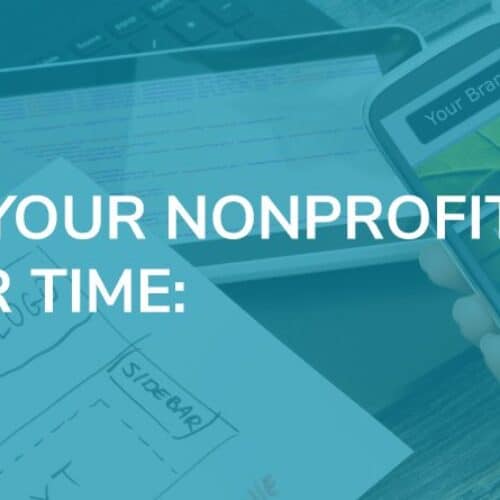Fundraising is the gentle art of teaching the joy of giving.
-Henry Rosso
Back in the early 2000s, my husband and I lived in London for a few years. During one memorable job interview, a very clueless (ok, uninformed) interviewer asked me rather abruptly, “what’s the difference between you and someone on the street shaking a tin cup?” It’s ok to cringe. I did. Rather, I think I did either before or after I picked up my chin off the table in shock.
It took me about a second to compose myself and I then embarked on a long reply about the strategy and relationship building skills that I would bring. Fundraising to him was perceived as unpleasant (I am reading between the lines of his question!) and begging (how else do you describe shaking a cup for money?). It was, random, unpleasant, and certainly involved little to no contact between fundraiser and donor.
What this interviewer didn’t understand was that as fundraisers, we aren’t just asking people for money. That’s certainly a major job responsibility but there’s a lot more to what we do. We are relationship architects between our organizations and the donors who currently or, we hope will eventually, support us. This is true across all kinds of fundraising—annual funds, online giving, individual and institutional major gifts, events, planned gifts.
Our goal is to create two-way conversations that are not transactional and circular exchanges of asking and receiving money. We know this isn’t sustainable in the long-term. Let’s start by looking at giving from the donor’s perspective—a slightly different twist on being “donor-centric.”
Research has found that giving has a positive psychological effect on donors. This has been shown in three studies I’ve come across. The first is research conducted by Arthur Brooks of The American Enterprise Institute that is fascinating: “charity stimulates prosperity not just prosperity which stimulates charity.” He found patterns in his research of charitable giving that seemed to suggest that donors become wealthier after making their philanthropic gifts.
These findings are consistent with two other psychological studies—the Social Capital and Community Benchmark Survey Harvard conducted in 2000 and the Science of Generosity Initiative Notre Dame ran in 2010—that also showed a correlation between a person’s charitable giving behaviors and their level of happiness. In both studies interestingly about 40% of people who gave money charitably said they were “very happy” versus non-givers who reported lower percentages. There are similar statistics related to volunteering as well.
Giving and volunteering make donors feel healthier, wealthier, and give them greater sense of empowerment and purpose. This means that fundraising—both asking and receiving—can actually be a pleasant and happy experience! So, why does fundraising seem so hard sometimes? Donors want to be giving their money away, right? The answer may lie in how we’re talking to our donors.
Step 1 is “The Why” — understanding the philosophy that drives your donor.
If we’ve got the scientific data that shows that the act of giving makes people feel good, isn’t that enough? No. This is why a Chronicle of Philanthropy article a few months back entitled “What Donors Want to Hear Before a Fundraiser Seeks a Big Gift” caught my eye. Interestingly, it wasn’t about sharing strategies and metrics of an organization’s work—getting to that “impact” and “effectiveness” we know is important.
Don’t get me wrong, this is an essential part of telling a donor-centered story. But, as the article reports, time and again, fundraisers didn’t stop to learn about the donors themselves—their philanthropic dreams and intentions, factors that influence their giving patterns (income, family responsibilities, other charitable commitments, etc.) of their major donors.
Equally as important, organizations didn’t look at their major donors as partners—as co-investors in their success. That’s key. How many times have we as organizations felt hesitant to “involve” our major prospects by “sharing too much” with donors about our dreams, challenges, and solution ideas because we don’t feel they have programmatic expertise and will only start to “meddle?”
Step 2 is what I call “The What and How” — positioning your mission, vision, and work in a way that demonstrates results and change.
In my last blog, I mentioned briefly how to craft your donor communications to feature impact and effectiveness—two big influences in donor giving. We see this in Penelope Burk’s 2014 Burk Donor Survey and in the 2014 U.S. Trust Study of High Net-Worth Philanthropy. Donors (whether high net-worth individuals, annual fund donors, foundations, or corporations) are driven by a sense of wanting to make a difference.
They are giving through an organization to solve a societal issue that is important to them.
That’s why impact and effectiveness are key data points that donors are watching. Donors simply want to be sure their gift of whatever size is helping to move the needle solving a problem—whether it’s more access to education, an end to homelessness, reduction in hunger, stronger community resilience, and so on. It’s like choosing stock to buy, you want the one that’s the best performing. But in this case, social change is the “profit” that philanthropists of all sizes are looking to gain with the organizations that demonstrate the biggest impact and effectiveness as the high performing stock.
How do you tie all of these ideas about impact, effectiveness, donor intentionality into your fundraising? I’ll start with the major donor approach since it’s with these supporters where you have the best opportunity to create impactful relationships. First, before you present your fundraising pitch to your major individual and institutional donors, get to know them better—and I don’t mean the facts and figures of their lives (income level, number of residences, family members, job, education, etc.). I mean what drives them. Ask them:
-
What do you want to accomplish with your giving? What are your top 3 charities/issues that you support?
-
What’s important to you when choosing an organization to invest in?
-
What was it about ______________that interested you in our work?
-
How do you define impact? What do you look for when measuring the effectiveness of an organization?
-
Who else is involved in your philanthropic decisions (especially important to know if a spouse or other family member has a say)?
These questions apply to individuals, corporations, and foundations since each of these kinds of donors have some strategy behind their giving choices. For individuals it will be joy and a sense of accomplishment. For institutional donors it will be good stewardship of their key stakeholders’ (investors, employees, executives) resources.
And then, guess what? Your job becomes easier because you have a baseline from which you start to build a dialogue around shared values. You will be able to discern where your organization’s vision overlaps with your donor’s which then can lead to successful and hopefully transformational solicitations.
There’s a way to open up this interaction with non-major gift donors as well. Start by polling all of your volunteers who are not major donors. Why do they give of their time, talent, and treasure to you? You might consider sending out an annual electronic survey to all of your past supporters (maybe last two years?) that asks questions around donor support generally, of your organization, and their likes and dislikes in communication styles, as a few examples.
As you think about your donor engagement strategies, perhaps you segment a group of long-time donors for personal calls by staff, Board members, and/or other volunteers. Draft a short script thanking them for their ongoing support and asking for a few minutes of time to get to know them better. Or you may feature a donor in one of your communications (annual report, newsletter, e-blast, etc.) that profiles their giving and why supporting your organization is important to them.
Who knows? You may just inspire your next major donor you didn’t even know was supporting you.
If we stop leading every conversation with our organizational needs and start being more curious about our donors’ stories and philanthropic dreams, just think of the aspirational conversations you can start to have!
This post first appeared on Network for Good on 15 December 2015.





